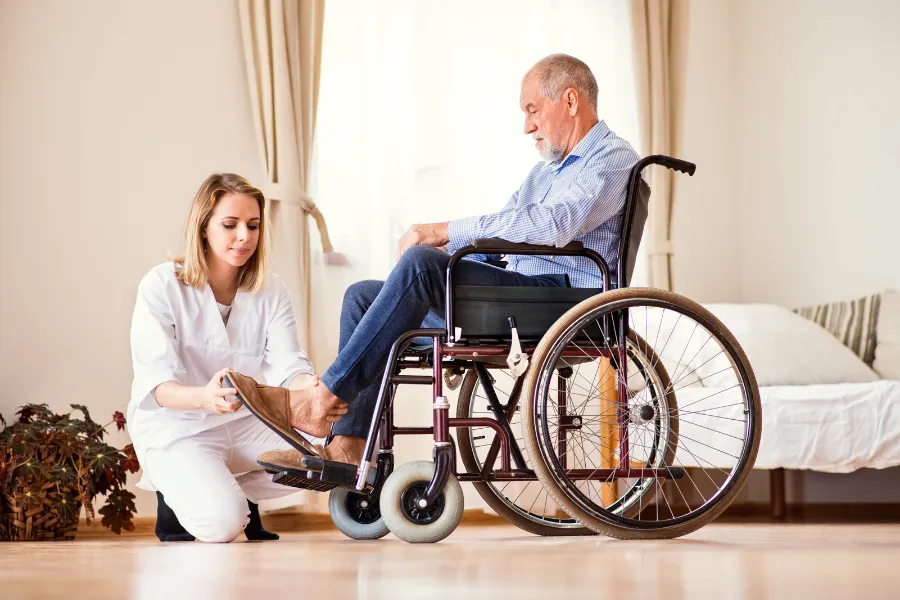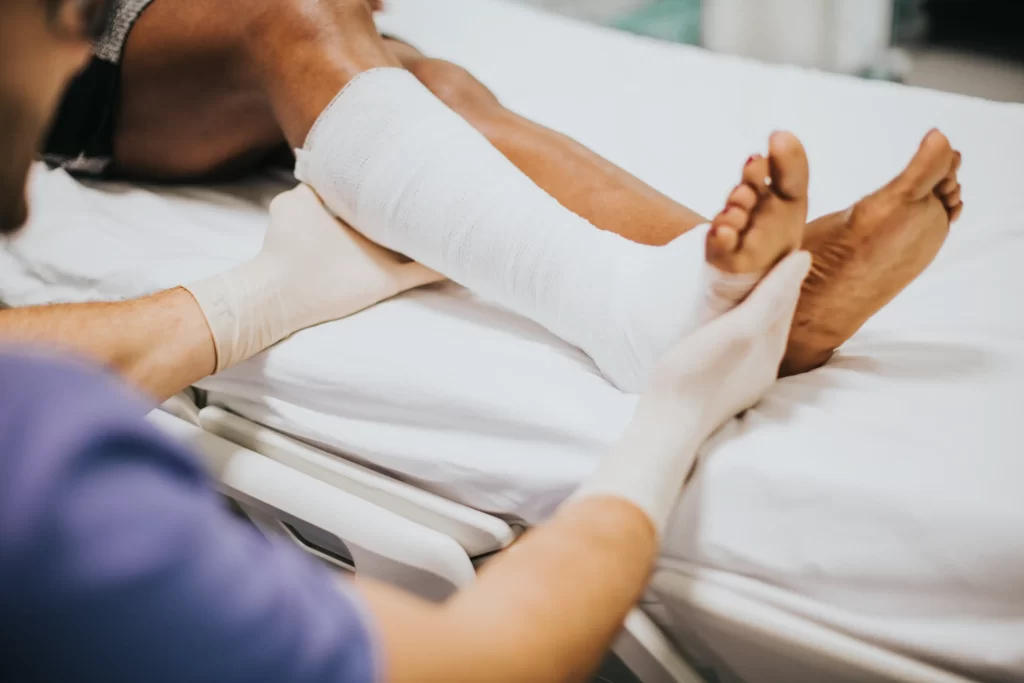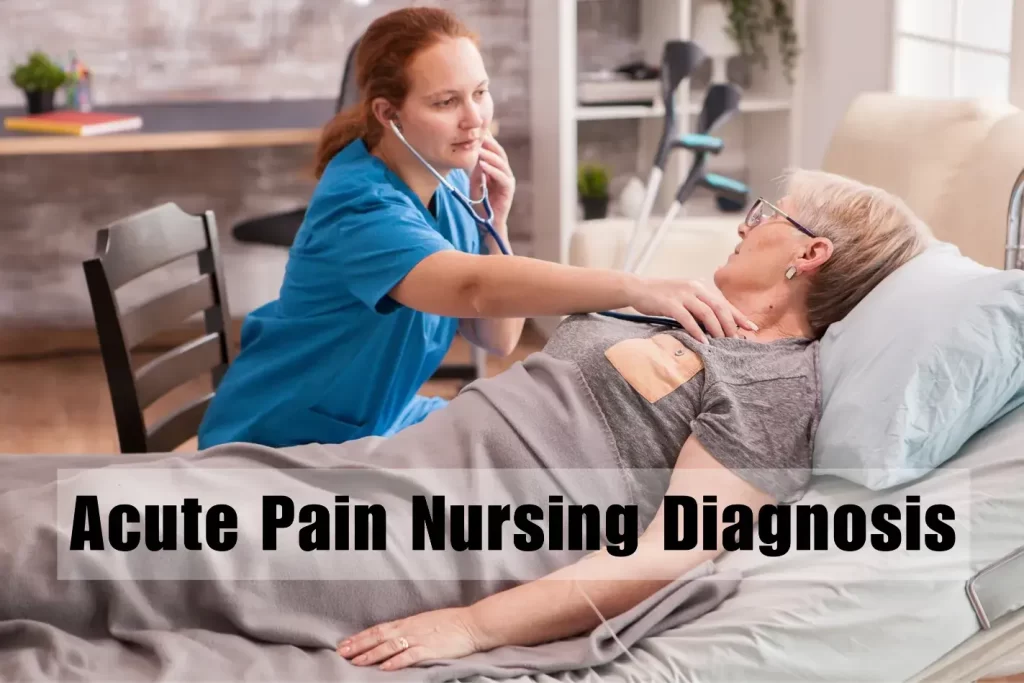Acute pain is a sudden and unpleasant sensory and emotional experience associated with actual or potential tissue damage. It is a common nursing diagnosis, and nurses play a vital role in assessing, managing, and evaluating pain in their patients. Today let’s talk about Acute Pain Nursing Diagnosis.
Learning deeply about acute pain and its nursing diagnosis will help you a lot. More so, you will get a better understanding of the issue. With the right rushing and medication process you will get out of the pain right away. More on it below.
What Is Acute Pain?
In general, acute pain is a shape, intense but short-term pain. More so, it is caused by injury, surgery, and other illnesses. The pain also indicates to you that there’s something wrong with your body. The pain often gets lower once the cause or the issue has been healed.

In addition to the basic causes, some of the painful medical processes can also cause these kinds of pains. For example, If you have gone through an intense dental procedure, you might have these kinds of pains.
Popular Nursing Diagnosis
Let’s talk about the popular nursing diagnosis for Acute Pain. These are the tested and popular methods for nursing diagnosis. Let’s have a look at it right now.
1. Complete Assessment
At the first step of nursing diagnosis, it’s necessary to assess the pain and the response. That’s how you as a nurse will be better prepared to come up with a diagnosis. Without proper assessment over a specific period of time, the diagnosis couldn’t be successful at all.
Plus, it’s also recommended to use appropriate pain scales for the patient. In fact, there are several pain assessment techniques to use. Right after an in-depth assessment, the next steps come into the nursing diagnosis timeline.
2. Provide Measures To Relieve Pain
After a complete assessment, it’s time to provide proper pain-relieving drugs to the patient. It helps the patient’s body to cope with the lower-level pain. Moreover, it prevents the pain from going to the next level.
Providing measures to relieve pain is the right way to go as the pain can anytime get to another level. Perhaps, when acute pain gets to the next level, it requires more complex measures and a higher dose of drugs as well.
3. Provide Therapy & Physical Interventions
Applying physical intervention can work perfectly to reduce the session of the pain. Some of the popular intervention methods are cognitive-behavioral therapy (CBT). This therapy can include distraction, guided imagery, and others.

Some of the well-known physical interventions are Acupressure, massage, applying ice packs, and others. The best part of the physical intervention is it affects the pain directly. With the help of physical intervention, pain management can get a lot easier and simpler.
Signs And Symptoms
Let’s talk about the signs and symptoms of Acute Pain. Understanding the signs and symptoms will help you to better understand the issue.
Pain
The obvious signs of acute pain are short yet short-term pain. The intensity of the pain can be different but most of the time it’s troubling.
Behavior Change
Due to the sudden rise in pain, the person suffering acute pain can get irritated easily. More so, the patient can be seen guarding the spot where the pain occurs often.
Expression
Patients with acute pain will often create faces of pain. Perhaps, it shows that the person is facing frequent pain in their daily life.
Physical Changes
Acute pain can cause physical changes within the patient’s body. For example, the pain can change the current heart rate and blood pressure as well.
Factors That Cause Acute Pain
There are some common factors when it comes to the cause of acute pain. Let’s learn about these factors that cause acute pain.
1. Injury

The major cause of getting acute pain is injury. The injury can range from cuts, bruises, or fractures. Depending on the level of injury or cuts, the pain can get to higher levels. This is why, it’s recommended to take a proper nursing diagnosis for it.
2. Illness
Several illnesses such as stomach aches or headaches can cause acute pain as well. The best option in this kind of situation is to fix the underlying illness. With proper treatment, the acute pain will slowly get away.
3. Medical procedure
Processes like dental surgery can cause severe acute pain as well. As dental surgery involves different kinds of injections, it can cause acute pains at times.
4. Psychological Factors
Apart from physical factors, the psychological factor also played a great role in creating acute anxiety pain. Anxiety, depression, and high levels of stress are the main factors to consider.
Acute Pain Nursing Diagnosis Plans
Depending upon the condition of the patient the nursing care plan can differ a lot. More so the cost of the nursing plan can be a lot if the pain is in bad condition. More so the nursing plan includes different types of steps.
The first and primary steps of any nursing care plan are to assess the pain and do a physical intervention. Apart from physical intervention, the patient will also have higher comfort and lesser pain during the nursing care plan.
Conclusion
Acute pain is short-term pain that is caused by an injury, illness, or medical procedure. This is why you should have a proper Acute Pain Nursing Diagnosis plan. With better planning, you will get better results.
The pain will go lower with the help of a nursing diagnosis. So, look for a better nursing plan which has proper reviews on it. It will be a better and worthy step for you to go on.
FAQ
What Are Common Nursing Diagnoses?
Some of the common nursing diagnoses are pain, constipation, Deficient fluid volume, risk of infection, Risk for falls, and others. These are the common nursing diagnoses you could hear of.
What Are The 5 Types Of Nursing Diagnosis?
Among the 5 types of nursing diagnoses Problem-focused, Risk nursing, Syndrome nursing, and Possible nursing diagnoses are the most popular ones.
What Is The Nursing Diagnosis Of Fever?
The nursing diagnosis of fever is Hyperthermia. It is a state in which the body temperature is above the normal range.

Leave a Reply